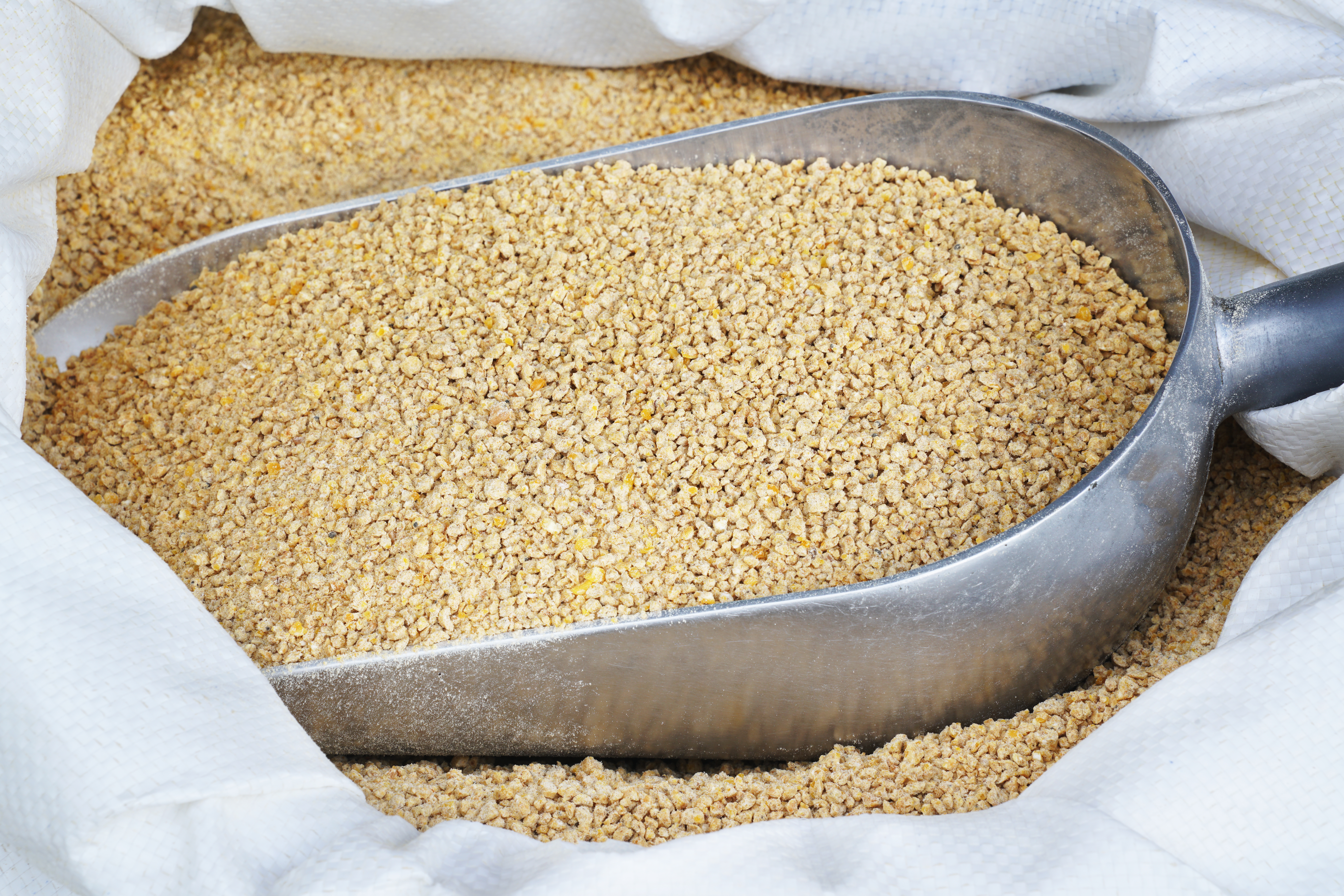The Mold Factor
Molds or fungi can cause both a significant quality reduction and economic loss due to contamination of grains used for food and feed. Common grain molds fall into two categories: field molds, like Fusarium, and storage molds, such as Penicillium, Aspergillus and Mucor. Under the right conditions, molds can flourish during harvest or storage time, robbing corn of valuable energy and nutrients – vitamins and amino acids – which your animals rely on to maintain health and grow.
When it comes to molds, nutrient losses in feedstuffs can become concerning when mold counts reach more than 100,000 colony forming units (CFUs). And, when mold counts reach above 10 million CFUs, the mold will become visible to the naked eye. Overall, estimated losses of metabolizable energy in corn due to mold growth range from 5% to 25% depending on the mold species involved.2,3
The Low-Level Mycotoxin Threat
Mycotoxins – toxic metabolites produced by molds – pose a constant threat to livestock and poultry efficiency. Feeding high levels of mycotoxins often cause overt physical symptoms, like oral lesions in poultry or vomiting in pigs, which are easy to identify and address. However, the chronic effects of continuously feeding grains with low levels of toxins (e.g. damage to the intestinal barrier) are much more difficult – in many cases, impossible – to pinpoint as a source of performance drag.
Alone or in combination, low-level mycotoxins may reduce intestinal integrity and cause immune suppression, thereby increasing an animal’s susceptibility to disease.4 Further, loss in intestinal barrier integrity caused by mycotoxins may lead to nutrient malabsorption and poor body weight gain. Testing incoming grains to understand mycotoxins risks is key to ensure your herd or flock is set up for success.
The Lipid Variability Challenge
Not only are fats and oils the most concentrated sources of energy for diet formulation, but they also represent one of the most expensive ingredients in a diet. Unfortunately, lipids are often traded based on name alone rather than by assessing their quality and nutritional value. Inconsistency in the properties of lipids – such as their moisture (M), insoluble (I) and unsaponifiable (U) content – can influence a lipid’s apparent metabolizable energy (AME) and/or digestibility, thereby deviating from published values which are commonly used by nutritionists for diet formulation.5
Further, despite the fact that feeding peroxided lipids negatively influences animal growth and performance, oxidative status is also often overlooked when purchasing fats and oils.6 Oxidation of supplemental dietary fat can reduce dietary energy, lead to oxidative stress and cause vitamin degradation, thereby depleting feed of essential nutrients needed to maintain the health and efficiency of livestock and poultry.
Summary
Not all feed ingredients are created equal. In times of rising feed costs, managing feed quality – especially limiting profit-robbers like molds, mycotoxins, and oxidation in feed – is critical not only to optimizing your animal’s efficiency but also to your operation’s bottom-line.
To help customers manage these profit-robbers in feed, Kemin offers a specialized Customer Laboratory Services (CLS) team dedicated to helping customers clean up their feed and maximize its nutritional value in order to support optimal feed efficiency. Whether it’s researching potential suppliers, evaluating current ingredient quality, recommending a solution, or checking product application rates, Kemin CLS is available to help answer each of our customer’s unique needs.
To learn more about Kemin CLS services, ask your Kemin Sales Representative or contact us online.
References
1Patience, J.F., et al. 2015. A review of feed efficiency in swine: biology and application. Journal of Animal Science and Biotechnology, 6(33): https://doi.org/10.1186/s40104-015-0031-2.
2Bartov, I., N. Paster and N. Lisker. 1982. The Nutritional Value of Mouldy Grains for Broiler Chicks. Poultry Science, 61:2247-2254.
3Tindall, W. 1983. Moulds and Feeding Livestock. Animal Nutrition and Health, July/August. p.5.
4Romero, A., et al. 2016. Mycotoxins modify the barrier function of Caco-2 cells through differential gene expression of specific claudin isoforms: Protective effect of illite mineral clay. Toxicology, 353-354: 21-33.
5Wealleans, A.L., et al. 2021. Assessment of the quality, oxidative status and dietary energy value of lipids used in non-ruminant animal nutrition. Journal of The Science of Food and Agriculture, (wileyonlinelibrary.com) DOI 10.1002/jsfa.11066.
6Shurson, J. and B. Kerr. Fat, oxidation and the swine diet. National Hog Farmer, July 19, 2018.

